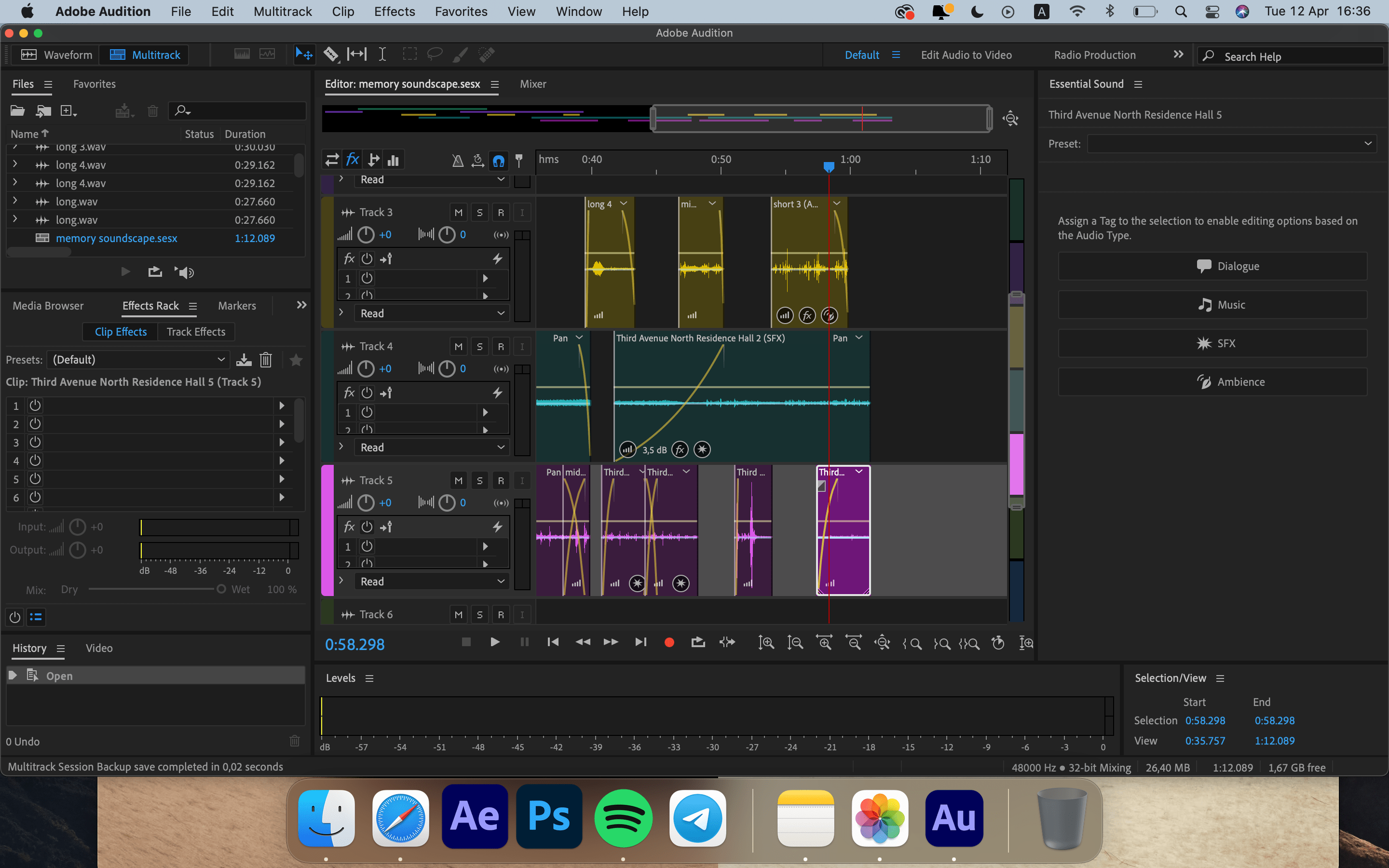- Concept & Story
I and Alice were focusing on the mental state of solitude while being located in the dynamic city. The story captures the life of two characters living in the megapolis, who are exhausted by the rhythm of the city.
We selected two works of art for this project, and if the first one is only used fragmentarily, the second one is very closely associated with the story. It is the part from the poem about the duality of Shanghai, of how the city can be glamorous for one layer of the population, and dirty & exhausting for the other. We interpreted this story of New York City’s life, as our plot is based there.
“By now the room was dark. Yi-sai lay silently in bed, her head spinning, her spirit exhausted. She wasn’t thinking of anything. She was just listening to the many different sounds of the city that came to her from near and far. Shortly afterwards she fell into a deep sleep,
Tomorrow the cycle would be repeated once again.” (A Day, Ding Ling)
In a visual manner, I was inspired by the Wong Kar Wai. As we had to complete the video part individually, I was doing my research on his older works, and primarily used Chungking Express as the visual reference. One of the earliest movies by Kar Wai was also focused to show the essence of Hong Kong, with his unusual yet fresh portrayal of the city.
We were thinking a lot about our own experience in the city, analyzing it, because the story from life, is the most natural and touching one. My friends from NYUSH are also locked down in Shanghai right now, and hearing their experiences contributed to developing the concept of feeling empty and lonely in the city.
Because for the most part cities such as New York City and Shanghai are highly romanticized, while overshadowing the fact that day-to-day existence in the city is not as saturated as people usually imagine. That it can be so much lonelier than the small village which you might have been living at.
- Creation Process & Execution

- Share your storyboard and describe how it helped you in your project.
The storyboard was helpful in a sense of concluding my ideas rather than the visual part, however, it also helped me to navigate during the shooting process and not forget all of the frames I had in my mind.
- Describe the process of choosing a setting, shooting, sourcing materials, lighting, and directing (if applicable).
I think colors were extremely important to represent the emotional state of the characters, and for that, I was looking out for a blue hour. Some of my shots were done just on my mobile phone, while some of them were on my DSLR camera. For the setting, I was looking for a bathroom that I could use, and for the actress who would be able to take a participation in an intimate setting.
It was a little hard to explain to the actress the emotional state that I was going for on a full scale, however, after calm and constructive dialogue we were able to communicate, and reached the result we were aiming for.


Using my acquired skills in the Adobe Audition, I finally learned how to design the sound in the Adobe Premiere Pro.
- Collaboration
I was responsible for recording the sounds of the city, and the shots of it as well. Alice did a really great job in recording the natural sounds, especially reading the poem by Ding Ling. Her intonation helped to set up the right atmosphere in the work. We were having zoom calls to discuss global ideas, and messenger to inform each other about small details. It is essential to have compromises and be flexible about your working schedule. In that way, you can collaborate more efficiently.
- Aesthetics & Results
Consider the aesthetics you choose to pursue your concept and story such as the following, tell us why do you think it is effective and you may also share your inspirations and references:
- Camera language (e.g., long-shot, different camera angles)
Wide angles of the city. Close-ups of the actress, and tracking techniques in the shot.
Long exposure – low shutter speed to give a sense of dizziness.
- Color correction/adjustment
We adjusted some lighting settings of the video and did not have significant changes to the color, because we were initially going for blue hour shots.
For the indoor setting, we adjusted frames to warm temperature to avoid the fluorescent effect.
I was experimenting a lot with the sequence of the project, which is why some of the viewers might perceive it as chaotic. However, the concept was to represent breakdown and overwhelming feelings while being isolated in the dynamic city.






